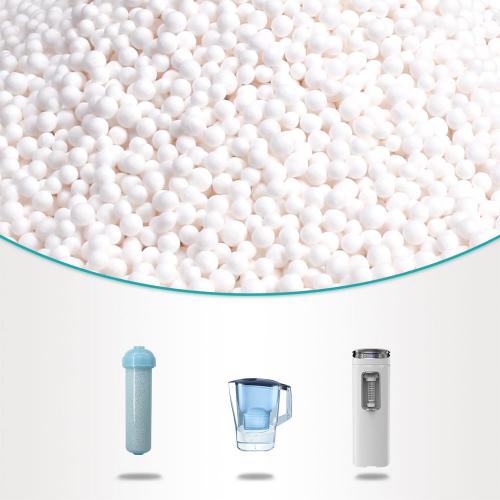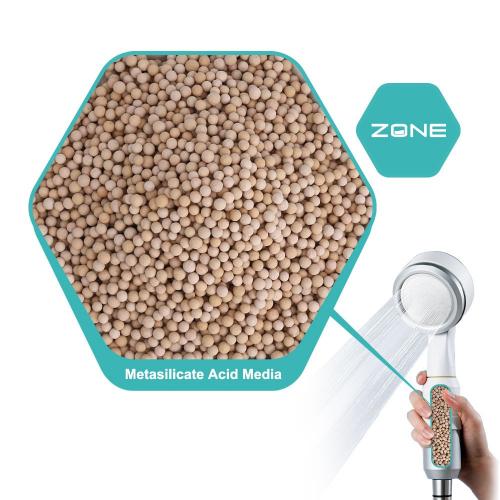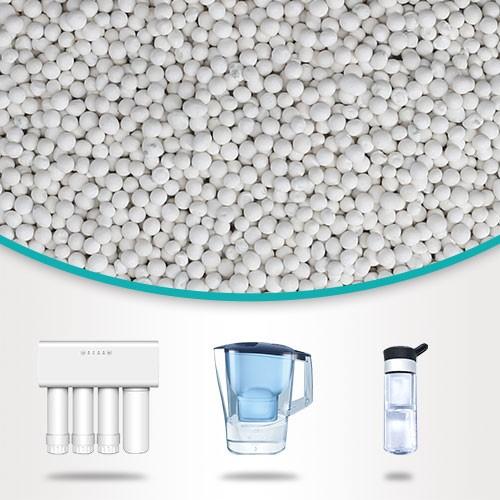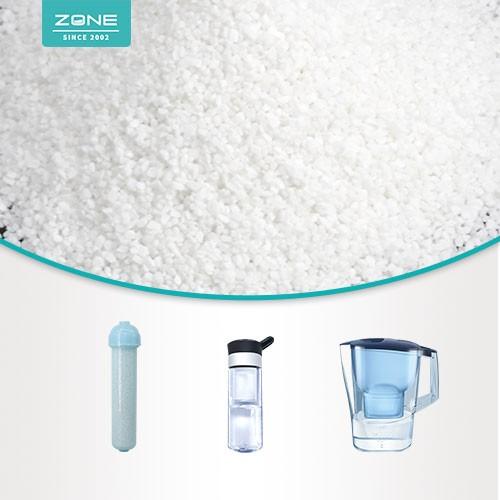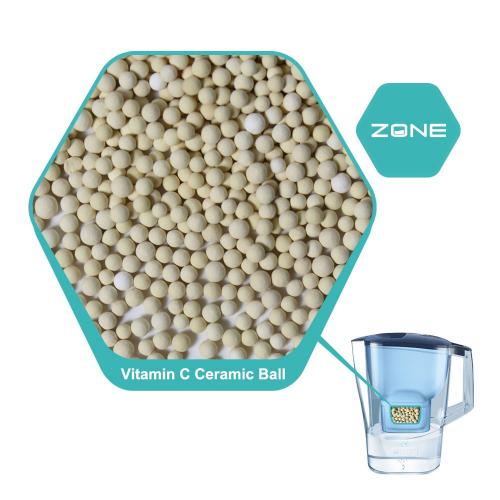180 commonly used terminology for water treatment(Circulating water treatment)
Update time: 23-02-01 Views: 1139
180 commonly used terminology for water treatment(Circulating water treatment)
By Zhao from Onlyzone,a manufacturer of water treatment bio ceramic ball filter media in China.
45. Circulating water; the system that uses water to cool the process medium is called the cooling water system.
46. DC cooling water system; the cooling water only passes through the heat exchange equipment once, and the water is discharged after use.
47. Open circulating water; use water cooling to remove the heat emitted by the process medium or heat exchange equipment, and then use the hot water to evaporate part of the hot water when it is in direct contact with the air, so that most of the hot water is cooled, and then recycle.
48. Closed circulating water system; also known as closed circulating cooling water system. In this system, the cooling water is not discharged immediately after use, but recycled for reuse.
49. Cooling tower; it is a device that uses water as a circulating coolant to absorb heat from a system and discharge it to the atmosphere to reduce the water temperature. There are two cooling methods: natural ventilation and mechanical ventilation.
50. Water distributor; return water is evenly distributed to the filler through the water distributor.
51. Filler; the return water passes through the filler to form a water film, increasing the contact area with the air.
52. Water eliminator; recovering part of the liquid water carried in the evaporated water vapor.
53. Circulating water volume; refers to the sum of the circulating water volume of the cooling tower on the circulating water system. n50 water retention: the sum of all water volumes in the circulating water system is equal to the sum of the volume of the pool and the volume of water in the pipes and water cooling equipment.
54. Supplementary water volume; used to supplement the water required for loss due to evaporation/drainage/splash in the circulating water system.
55. The amount of water filtered by the side; the amount of water that is diverted from the circulating cooling water system and processed according to requirements, and then returned to the system.
56. The amount of evaporated water; the amount of water lost by evaporation during the operation of the circulating cooling water system.
57. Sewage volume: Under the condition of determined concentration multiple, the volume of water that needs to be discharged from the circulating cooling water system.
58. The amount of water lost by wind blowing and leakage; the amount of water lost by wind blowing and leakage during the operation of the circulating cooling water system.
59. Supplementary water volume; the circulating cooling water system supplements the lost water volume during operation.
60. Concentration multiple; the ratio of the salt concentration of the circulating cooling water to the salt concentration of the make-up water.
61. Heat exchange; heat exchange between objects is called heat exchange. There are three basic forms of circulating water heat exchange: heat exchange, convective heat exchange, radiation heat exchange, and evaporation heat exchange.
62. Heat conduction; the phenomenon of heat transfer between parts of objects in direct contact is called heat conduction.
63. Convective heat exchange; in the fluid, the heat transfer between the fluids is mainly due to the movement of the fluid, so that part of the heat in the hot flow is transferred to the cold fluid. This heat transfer method is called convective heat exchange.
64. Radiation heat exchange; part of the heat energy of a high-temperature object becomes radiation energy, which is emitted to the receiving object in the form of electromagnetic waves, and then the radiation energy is converted into heat energy and absorbed. This method of electromagnetic wave transfer of heat is called radiation heat exchange.
65. Evaporation heat exchange; a form of heat exchange that takes away the latent heat of vaporization when water molecules evaporate.
66. The temperature difference between the inlet and outlet of cooling water; the temperature difference between the inlet of the cooling tower and the outlet of the pool.
67. Wet bulb temperature: refers to the air temperature when the water vapor in the air reaches saturation under the same enthalpy air state.
68. Dry bulb temperature; it is the temperature measured by the thermometer in ordinary air, that is, the temperature often mentioned in our general weather forecast.
69. Physical cleaning: the debris in the pipeline is cleaned out of the pipeline by the flow rate of water.
70. Chemical cleaning: through the action of chemicals, the surface of the metal heat exchanger is kept clean and activated to prepare for the pre-film.
71. Pre-film; that is, chemical conversion film, which is a type of protective layer on the surface of metal equipment and pipelines, especially for pipelines that have passed pickling and passivation, and can be protected by pre-film methods.
72. Corrosion inhibitors; treatments that inhibit or delay the corrosion of metals.
73. Scale inhibitors; use chemical or physical methods to prevent deposits from forming on the heating surface of heat exchange equipment.
74. Oxidizing fungicides; biocides with strong oxidizing properties, usually a strong oxidizing agent, have a strong killing effect on microorganisms in water.
75. Non-oxidizing fungicides; instead of killing microorganisms by oxidation, they act on special parts of microorganisms by causing toxicity, so they are not affected by reducing substances in water.
76. Available chlorine: refers to the amount of chlorine with equivalent oxidation capacity in chlorine-containing compounds (especially as a disinfectant), which can quantitatively express the disinfection effect.
77. Residual chlorine; Residual chlorine refers to the effective chlorine remaining in the water after the water has been chlorinated and disinfected for a certain period of time.
78. Combined chlorine; refers to the compound of chlorine and ammonia in water. There are three types: NH2Cl, NHCl2 and NHCl3. NHCl2 is more stable and has a good bactericidal effect. It is also called combined residual chlorine.
79. Free residual chlorine: refers to ClO-, HClO, Cl2, etc. in water, which have fast sterilization speed and strong bactericidal power, but disappear quickly, also called free residual chlorine.
80. Orthophosphorus; +5-valent phosphorus in phosphate.
81. Organic phosphorus; it is a compound containing a carbon-phosphorus bond or a phosphoric acid derivative containing an organic group.
82. Total iron; Iron in various states of existence, including all iron elements.
83. Total zinc; zinc in various states of existence includes all zinc elements.
84. The residence time of the agent; the effective time of the agent in the circulating cooling water system.
85. Scaling: Calcium and magnesium bicarbonate dissolved in water are decomposed by heat, and white precipitates are precipitated, which gradually accumulate and adhere to the container (public account: Coal Chemical Industry Alliance), which is called scaling.
86. Corrosion; refers to the process of loss and destruction (including metals and non-metals) under the action of surrounding media (water, air, acid, alkali, salt, solvent, etc.).
87. Biological slime; the viscous substance that is mixed with other organic and inorganic impurities and sticks to the surface of objects by microorganisms and the mucus produced by them.
